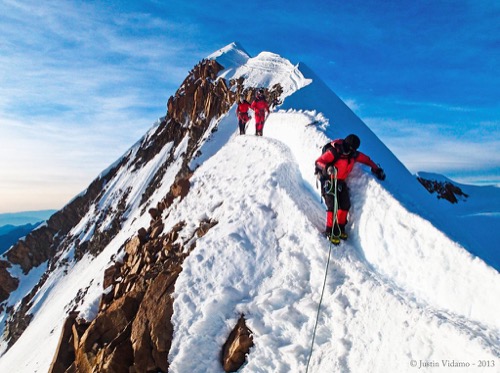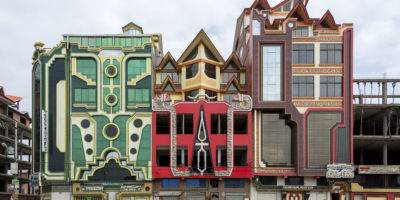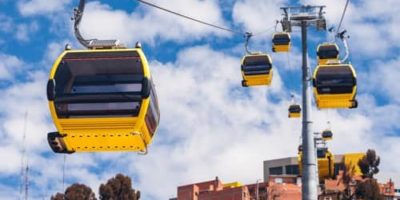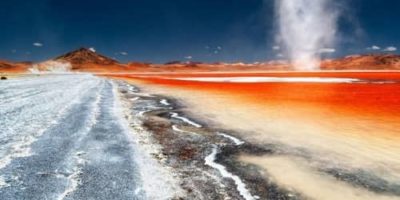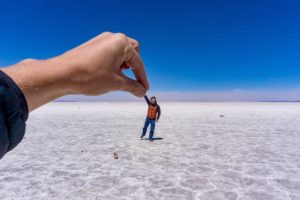So you’re planning to climb Huayna Potosi? Most of my friends who visit me in La Paz ask how hard it is to climb Huayna Potosi. Here’s what I always tell them.
So is climbing Huayna Potosi hard? If you’re reasonably fit and well acclimatized, Huayna Potosi is one of the easiest 6000m+ peaks you can climb. Even if you don’t have any prior mountaineering experience, your guides will teach you the basics one day before the climb.
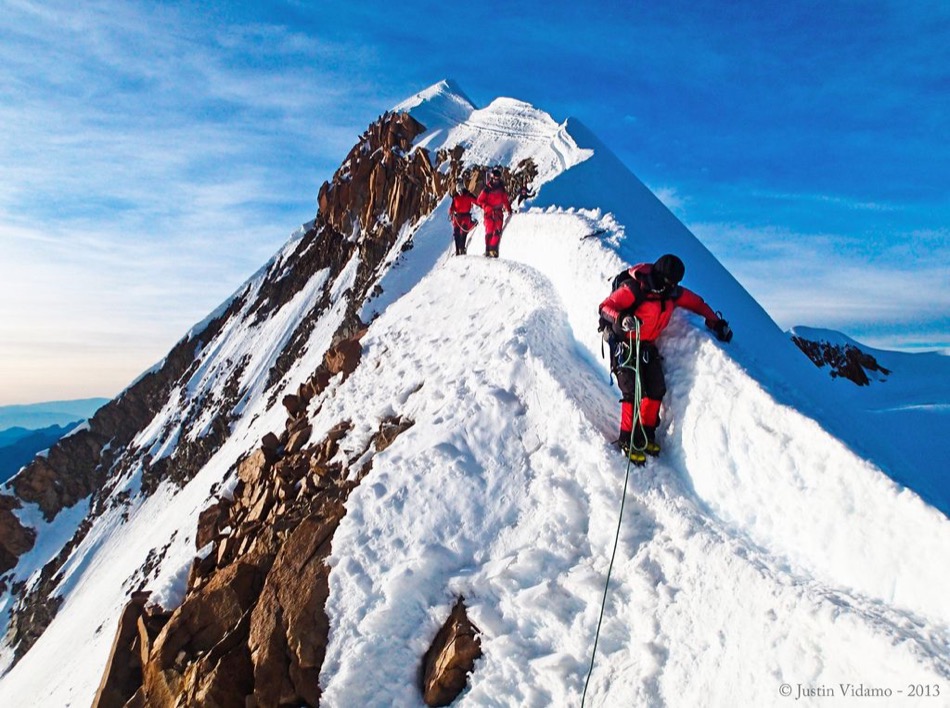
Although I’m not super fit, I’ve climbed Huayna Potosi three times with visiting friends. Read on and I’ll tel you how to prepare, what to expect and what challenges you might face.
Contents
How Long Does it Take to Climb Huayna Potosi?
In general, the Huayna Potosi trek is a 3 day itinerary. On the first day, you leave La Paz and settle down in the Zongo Pass base camp. In the afternoon, the guides will take you to practice the skills needed for the more technical parts of the climb.
The second day starts early in the morning. It takes 3-4 hours to reach the base camp from where you’ll make the final climb to the summit later tonight.
On the third day, you start the trek to the summit at 1AM. This is the most challenging day since the climb is done at a 45 degree angle on the east face of the mountain. It takes approximately 6 to 7 hours to make it to the top.
Here are the trails available on Huayna Potosi:
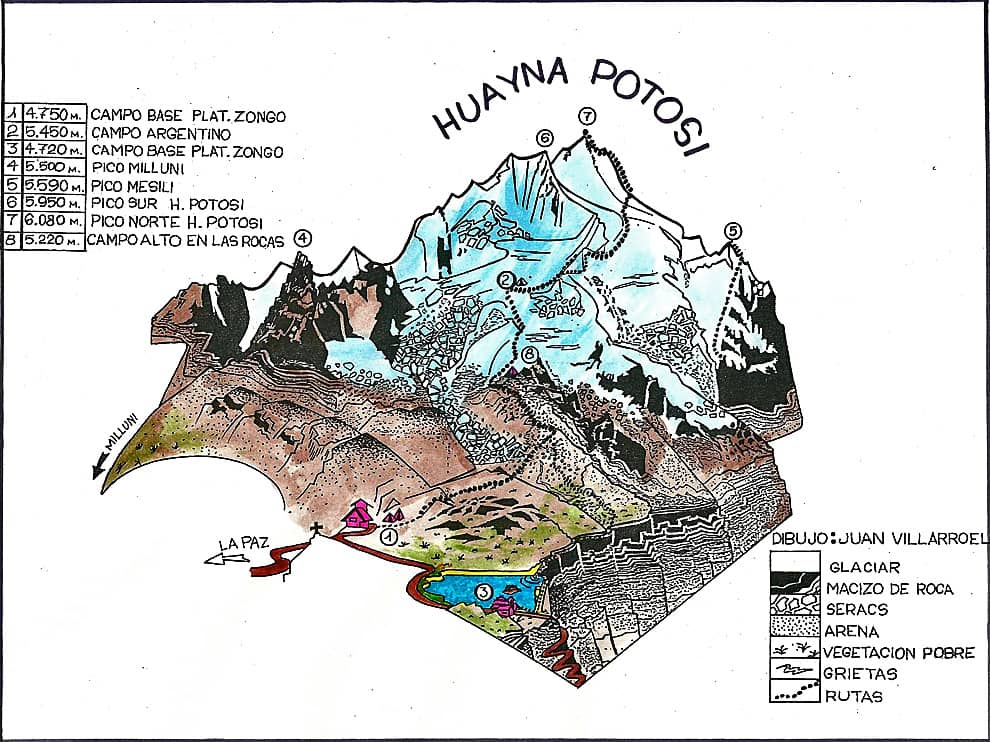
There are 3 trails to climb Huayna Potosi:
- The Normal Route
- The American Route
- The French Route
The Normal Route
This is the most popular route to climb Huayna Potosi. Most agencies in La Paz offer this route since it’s the easiest of the three routes and suitable for beginners. You can expect to pay between 700 to 1000 BOB.
If this is your first time, you should take this route.
The American Route
The American Route is also called the Lyon Route (no idea why). This route climbs the west face of the mountain. This route is not crowded and it’s likely that you’ll be the only one climbing on this route.
This is a more technical climb than the normal route and is suitable only for experienced climbers. In bad weather, it can take over 24 hours to climb the mountain.
The French Route
The French Route is also a very technical climb. In addition, you need camping equipment including tents. Good fitness and prior mountaineering experience is a must.
Here is my post about whether Huayna Potosi is dangerous.
So Who Can Climb Huayna Potosi?
Like I said earlier, Huayna Potosi is the most beginner friendly 6000m+ mountain in Bolivia. That said, you do need to be reasonably fit and well acclimatized.
Although it’s not technically hard, the agencies in La Paz make it sound much easier than it is. Obviously, that’s because they’re tying to sell you tours. I cannot emphasize how important acclimatization is.
Make sure that you’ve spent at least 4 days in La Paz or another high altitude place before you attempt the climb to the summit.
On the last day, it’s more about mental strength than physical fitness. The climb isn’t very technical. So most of the people who don’t make it to the top either give up due to mental exhaustion, or suffer from altitude sickness.
Best Time To Climb Huayna Potosi
Although you can climb throughout the year, the best time for climbing the Huayna Potosi is between the months of June and September, when rainfall is minimal and the skies are fairly clear. However, you should be aware that the days are shorter and the temperatures can reach -20ºC.
Here are the average monthly temperatures in Huayna Potosi:
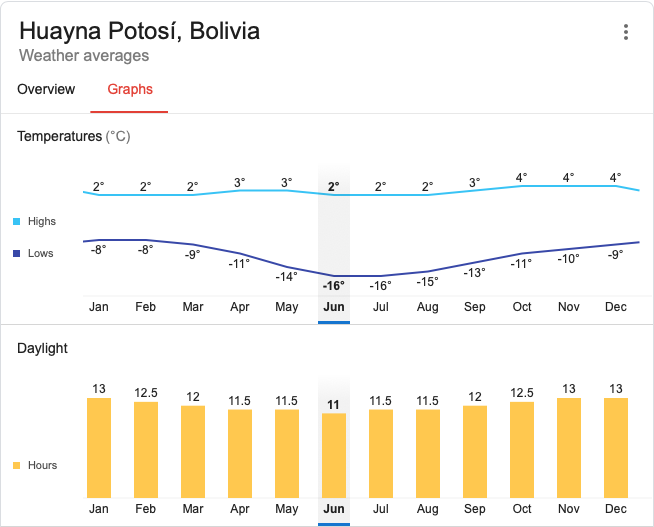
Preparing For The Climb
Check The Weather
Before you book your trip, check the weather forecast for the next few days. You’re probably going to attempt this only once. If the forecast is not good, I recommend postponing the departure.
Check Your Gear
At minimum, you’ll need breathable clothing, thermal clothing, gloves, a wool cap, boots, sunglasses. Also, ice axe and crampons. Some of these may be provided by your tour operator in La Paz. However, the gear they provide has seen better days. So I recommend getting your own gear.
Training course
If you have time before your trip, try and take a course in Alpine climbing. Various clubs offer introductory courses in which basic techniques are taught. This will help you be more confident during the actual climb.
Physical Fitness
Mountaineering requires good physical condition and endurance skills, as it is a demanding physical activity. Consistent physical preparation for at least 3 months before the ascent (hiking, biking, jogging) will make your climb much more enjoyable.
How Much Does It Cost To Climb Huayna Potosi?
Most 3 day / 2 night tours to climb Huayna Potosi cost around 700 BOB. They all include shared transportation, meals, climbing equipment, 2 nights in a refuge and a Spanish speaking guide. If you’d like an English speaking guide, you’ll have to pay a little extra.
Some additional expenses that you may have are expenses for additional equipment that won’t be provided (like sleeping bags, head lamps etc), the entrance ticket, fees to use the toilets, water and if you like, a porter.
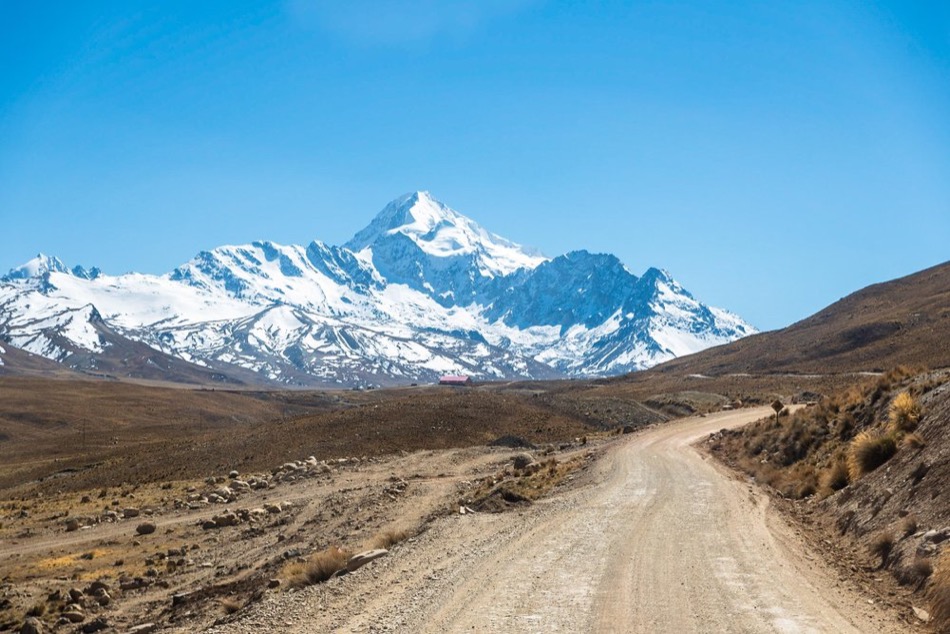
How To Get To Huayna Potosi
Generally, if you book a tour to Huayna Potosi, shared transportation from La Paz will be included in your package. However, if for any reason you decide to find your own way to the Zongo base camp, you can do it easily with public transport or your own car.
Own Car
From the center of La Paz, head towards the north exit of the city. Once on route 41, proceed to Avenida Chacaltaya, where you should turn right. Advance along this route towards the North. 5.6 kilometers ahead of this intersection, there is a fork: to the right it leads to Chacaltaya, and to the left to Paso Zongo. There are 14.8 additional kilometers bordering several mountain lakes until you reach the beginning of the route, at the new Llaulini Refuge.
From PLaza Murillo (center of La Paz) it is 31.6 kilometers to the beginning of the hike. The traffic is normally heavy, so you should consider about an hour and twenty minutes of travel.
Public Transport
Bus: There are public buses (mini buses) to Zongo, with no fixed departure time. They leave as soon as they are full. To get to the bus stop, take the red cable car to La Paz Alto, which is the last stop of the red cable car.
Then you can walk or take a cab (5 bs) to the Plaza Ballivian and wait for the mini buses to Zongo (20 BOB). Make sure you get off at the Huayna Potosi base camp. The trip takes approximately one hour from El Alto.
Cab or private transportation: Taxis usually charge 100 bolivianos from La Paz to the base camp, but if you prefer security, use the services of a tourist agency (there are many in Sagarnaga street).
Sun Protection
You probably already know that altitude increases the risk of sunburn. For a long time it has been wrongly believed that the effect of the sun’s rays on the skin was greater at lower altitudes. But according to several studies it has been shown that the exact opposite is true: the higher the altitude of sun exposure, the greater the effects of the sun.
The higher you go, the faster you will get burned. It is estimated that for every 300 meters above sea level, the risk of suffering a burn increases by 4 to 5 percent. You go to over 6000m when you climb Huayna Potosi. In the snow, the risk of burns is even greater. The snow acts as a mirror that reflects the sun’s rays, so the body receives more radiation.
So how do you protect yourself? To begin with, you should use sunscreen with a higher protection factor (SPF) than the one usually used at the beach. You’ll also have to reapply the protection approximately every two hours.
Please take special care of the area around the eyes and lips which are more delicate than the rest. Use a lip balm with a high sun protection factor, especially in the snow. I recommend buying these products before you arrive in Bolivia. You’ll probably have a better choice.
Don’t forget to protect your eyes with good quality sunglasses. And don’t forget to cover your head with a hat or cap to avoid getting sunburned.
